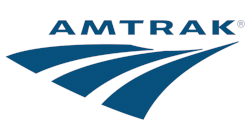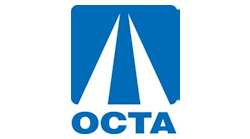Emergency stabilization work to start this week on OCTA-owned San Clemente tracks
Work is tentatively scheduled to begin this week to stabilize the railroad track through San Clemente in Orange County, Calif., after the Orange County Transportation Authority (OCTA) finalized a contract with Condon-Johnson & Associations Inc., a geotechnical contractor in Los Angeles.
Emergency repairs occurred in September 2021 to the track adjacent to the Cyprus Shore Homeowners Association in southern San Clemente following heavy rain and storm surge that caused movement along the track. OCTA explains while that emergency work stabilized the track for several months, geologists and engineers monitoring the area determined after additional storm surge in September 2022 that the adjacent slope was moving again and the track was moving .01 inches to .04 inches per day. Metrolink and Amtrak halted all passenger trains from using the track on Sept. 30 out of an abundance of caution until more stabilization efforts could take place.
The OCTA Board of Directors held a special meeting Oct. 4 and declared a state of emergency for the tracks in San Clemente, which cleared the authority to finalize a contract for the stabilization work.
“We’re in uncharted territory with this emergency stabilization work and, as we’ve said all along, passenger safety is what guides all of our actions,” said OCTA Chairman Mark A. Murphy, also the Mayor of Orange. “We want this work to get done as soon as possible but we first need to make sure it’s done right and the slope is secure.”
OCTA says the current plan is to complete the work in one phase over approximately 90 days. Project engineers and geotechnical experts will continually monitor the slope next to the track during construction. In partnership with all rail agencies, a decision will be made when to safely resume passenger rail service. Restoration of passenger rail service could happen in as soon as 60 days, in mid-December or when the construction is expected to finish in mid-January, in 90 days.
The construction timeline is subject to change, depending on several factors including right-of-way negotiations, permitting, securing necessary construction materials and inclement weather.
That track work will involve drilling large steel anchors approximately 100 feet long into the bedrock of the slope adjacent to the railroad track to prevent it from pushing the track further toward the ocean. The track has moved as much as 28 inches during the past 13 months, due to storm surge and sand erosion on the coastal side and the gradually sliding hillside on the other.
The emergency construction is estimated to cost $12 million with the California Transportation Commission approving $6 million in emergency funding for the project; OCTA is working with state and federal officials on the remaining funding for the repairs.
In addition to the immediate repair work, OCTA continues to review long-term options for protecting the rail line in this area and throughout the coastal region. OCTA’s priority is to work with all partners to move forward with slope stabilization to ensure safety for all passengers who travel through the area.
Mass Transit Staff Report
Stories under this byline were produced through a team effort by the editorial staff of Mass Transit.
To learn more about our team, click here.
If you have a story idea, let us know by emailing [email protected]. Please review our contributor guidelines found here.



